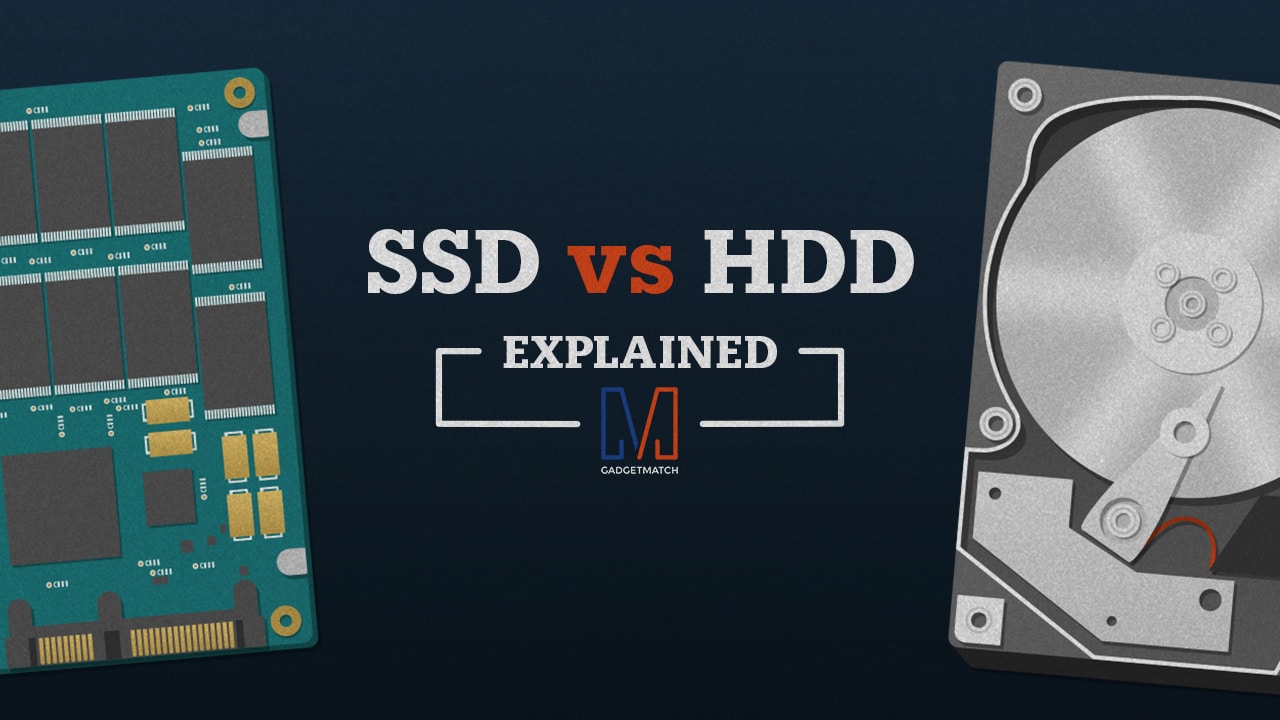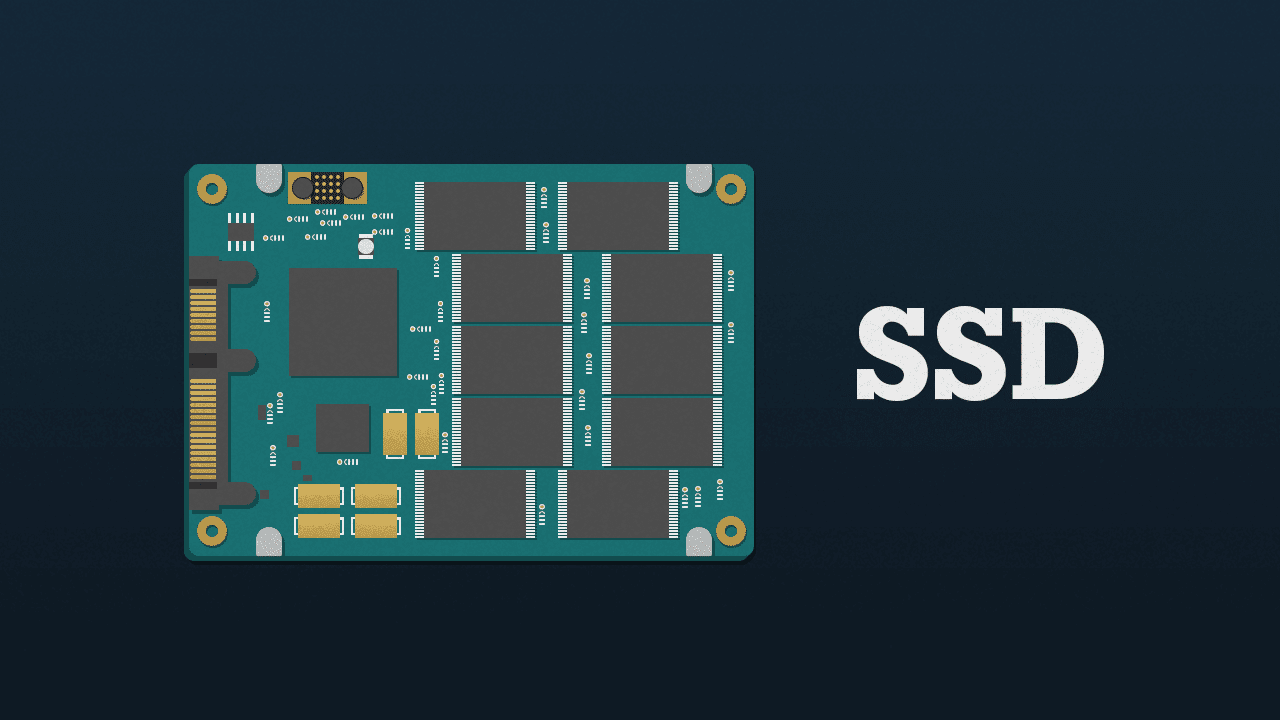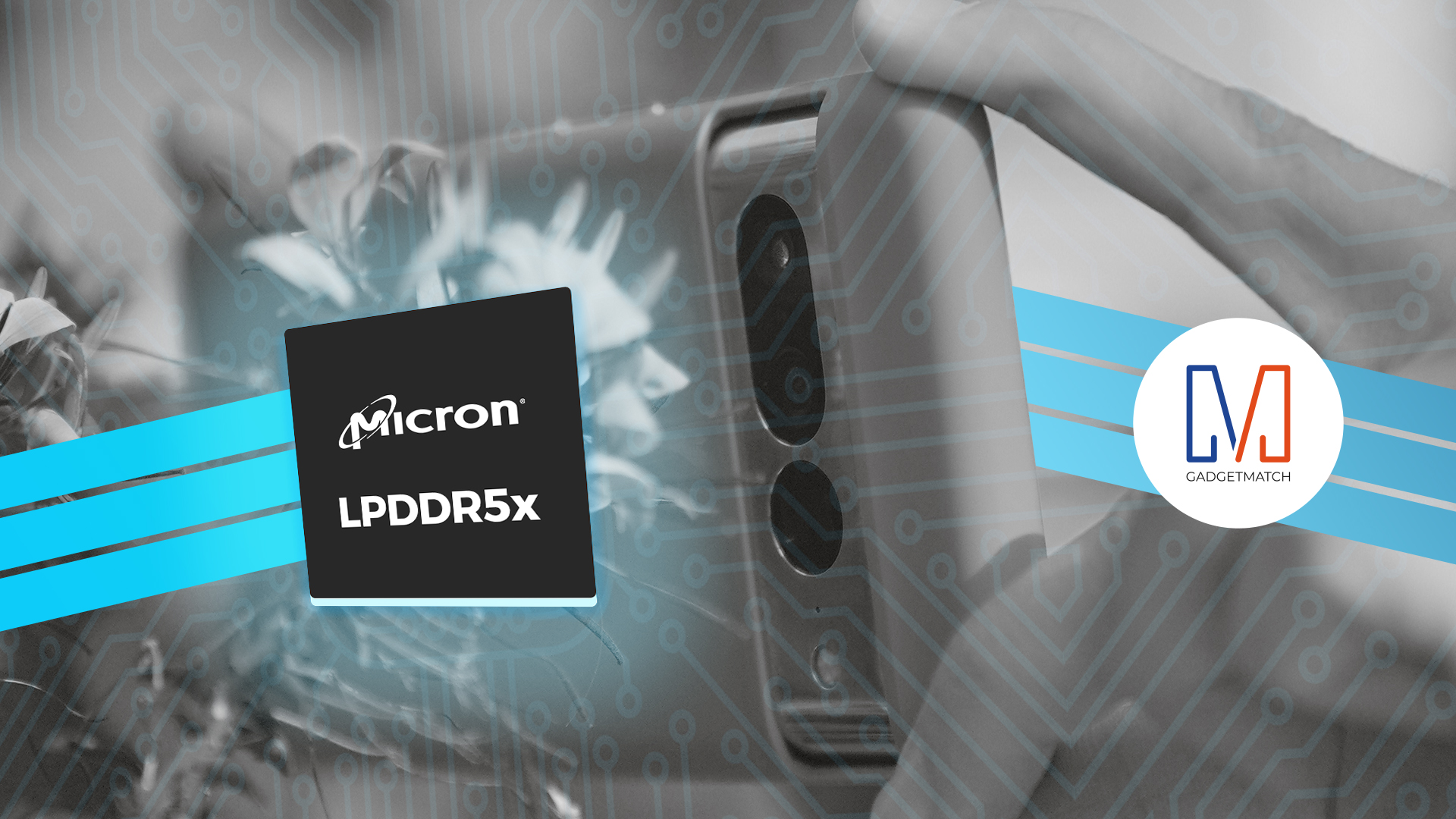Explainers
SSD and HDD: What’s the difference?

For the past few years, solid-state drives (SSDs) have become quite popular in the computing world, mostly because of how fast they are compared to hard disk drives (HDDs). So, what exactly sets an SSD apart from an HDD?
Nowadays, computers use non-volatile medium for storage, which means data that’s stored in it doesn’t get lost once the computer shuts down. Storage for modern-day computers and notebooks have been handled by hard disk drives for the longest time and it’s only now, with SSDs becoming more affordable, that consumers are seeing a different storage medium in their computers.
Hard disk drives have mechanical parts
If you aren’t familiar, hard disk drives store data on circular disks made up of aluminum, glass, or ceramic that are coated with a magnetic layer, often called platters. Since these platters are responsible for holding the data, the storage capacity of an HDD is dependent on how many platters it has.
When the computer’s processor sends out instructions to read and write data, the motor on the drive moves the actuator arm across the platter. At the end of the actuator arm are the read/write heads which are made up of tiny magnets responsible for reading data already stored on the platter or writing new data on the empty spaces on the platter. The combined movement of the actuator arm and the rotation of the platter allows the computer to read and write data, which is kind of like the arm of a record player touching a vinyl record to play music.
Having all these moving parts means an HDD’s read and write speed is dependent on how fast the platters can rotate and how fast the actuator arm can track locations on the platter. These parts can only move up to a certain speed or else they’ll break down, and nobody wants a broken storage device. As with all mechanical parts, heat and noise are by-products of their movements, which is why an HDD can become hot and/or noisy during operation.
Solid-state drives have no moving parts
From its name, an SSD is a drive that uses a type of solid-state storage called flash memory, which is also a non-volatile storage medium, to store and retrieve data. Each flash memory chip found in the circuit board of an SSD contains memory cells that are made up of floating-gate transistors, which are a special type of transistor that can store or discharge an electrical charge in its cage-like part called the floating gate. The storing capability of these transistors is what allows the data to remain, even when there’s no electricity flowing through them.

Inside an SSD is a circuit board with a bunch of embedded chips, including the flash memory, controller, and cache.
As mentioned, an SSD doesn’t have moving parts like the actuator arm and motors of an HDD. Instead, it has an embedded processor called a controller. Much like the computer’s processor, the controller does all the heavy lifting, as it’s the one responsible for locating the blocks of memory where data can be read or written to.
This is also the reason why SSDs perform faster than HDDs; since they don’t need to wait for any moving parts to read or write data, the controller just needs to receive the instructions from the computer’s processor and it can start reading or writing data.
SSDs may not suffer from a mechanical breakdown, but they’re far from faultless. Flash memory can only have data written and erased a finite number of times before its cells degrade and become unreliable. This means an SSD can only write a certain amount of data before it fails, which is why SSD specification sheets typically include Terabytes Written (TBW), so consumers know how much data can be written into the drive before it eventually fails. However, SSDs these days can last more than ten years in typical day-to-day usage.
Both storage mediums have pros and cons
So, is a solid-state drive better than a hard disk drive, or vice-versa? Sadly, there’s no simple answer to this question, as it all depends on the needs of the consumer, which usually involves speed and storage capacity.
On one hand, if a person wants faster read/write times, an SSD is the clear winner, but you’ll lose out on storage capacity, since most SSDs today start from 120GB and can only go up to 1TB or 2TB. Mind you, those high-capacity SSDs will surely burn a big hole in your wallet.
On the other hand, if a person values capacity more, an HDD is the better option, with drives typically ranging from 500GB to 6TB of storage capacity for mainstream HDDs. Also, HDDs don’t cost an arm and a leg compared to SSDs if you want to get large-capacity ones.
With these in mind, there’s no stopping consumers from having both an SSD and an HDD in the same system. Setting up an SSD as your main drive with the operating system and other important software, while having a secondary HDD to store all your media and personal files, would net you the best of both worlds: a speedy system boot up without sacrificing storage space.
[irp posts=”2500″ name=”LTE-A Explained”]


It’s that time of the year again!
Since 2020, Samsung has equipped the Galaxy S20 Ultra with an ultra-fast 45W fast-charging speed compared to the Galaxy S10+‘s measly 15W charging standard. Four years after, 45W still remained on the Galaxy S24 Ultra.
For three consecutive years, Michael Josh has conducted a dedicated charge test to know whether its 45W “Super Fast Charging” works as promised on the latest line of Samsung’s Galaxy flagships. The Galaxy S24 Ultra isn’t an exemption to that.
Curious to know? Find out in our Galaxy S24 Ultra and Galaxy S24+ Charge Test.
Explainers
ChatGPT Explained: Should we be scared of AI?
Will the talking robot take over the world?

Back in the earlier days of the internet, an emerging but short-lived trend involved chatbots who could generate conversation with whomever it talked to. Does this sound familiar? Today, a similar phenomenon is creating a lot of waves online, headed by the infamous ChatGPT. The exceedingly popular ChatGPT is turning heads out of fear that the technology will eventually upend society and eradicate a lot of jobs.
But what exactly is ChatGPT? How is it different from language programs in the past? Is the world right to worry about them?
On the rise of language learning
ChatGPT is hardly the first software to inexplicably generate comprehensible dialogue without human intervention. Decades ago, the internet hosted rudimentary versions of today’s chatbot technology. The concept is somewhat similar, though. The early versions relied on a database of responses from human users. If you asked about coffee, for example, the answer you get will likely come from the logs of another user who talked about coffee in the past.
Because the system was imperfect in its infancy, part of the appeal was trying to get the software to fumble a conversation. However, if it did mess up, you can count on it asking you what it should have said. The next time someone asks the same question, the software might mirror what you said, creating a learning process between the software and the user.
Today, chatbots — meaning those usually used by businesses today — operate in the same way. If a customer comes with a query, the software will rely on a set of responses to most appropriately address the user’s problem. If the software can’t come up with a solution, the ball usually gets passed on to a human consultant.
Is ChatGPT just another chatbot?
Though the label certainly gets thrown around, ChatGPT isn’t strictly a chatbot. Instead, the software uses GPT-3.5, a specific language model created by OpenAI. Whereas early and more rudimentary versions of the same technology can already store an unbelievable amount of information in its memory, ChatGPT can analyze billions of words and the relationship between them.
Further, OpenAI extensively trains the software, ensuring that comprehension and grammar can live up to today’s standards. The learning is supervised. In fact, the company even has a makeshift reward system to ensure that the software puts out the most appropriate response. With users also contributing to the software’s learning process, ChatGPT is quickly emerging as a powerhouse for the technology.
The results speak for themselves. While users can generate simple conversations with the software, ChatGPT can just as easily answer more extensive queries with lengthier responses. If you ask it to create an essay about Christopher Columbus, for example, it can write a lengthy piece that can easily fool a casual reader. It can even handle more speculative queries. In a sample published by the developer, ChatGPT can answer what would happen if Columbus discovered America in 2015.
What’s it good for?
Based solely on what the software can do, ChatGPT can find its purpose in today’s world. The software can improve voice assistants and chatbots all over the internet. It can make big strides in the world of automation, enabling a more responsive interface between user and software.
On a more human aspect, the software can also handle more professional jobs with simpler prompts such as those involving simple marketing copy. It can help with more ephemeral research efforts, allowing users to get simple answers for otherwise complex questions.
And, on a more technical side, ChatGPT can reportedly analyze and detect what’s wrong with a piece of coding. With the software, developers can use ChatGPT to potentially repair code without having to pore over every single line. Allowing a powerful tool to inspect code speaks volumes for a lot of applications all over the world including smart vehicles and technical machinery.
However, as with every piece of technology, users will always find a way to use something beyond what it was originally designed for. ChatGPT is now changing the world of education as students are using the software to do their homework for them. Though a lot of the sample texts look like they can fool only lower levels of education, a Wharton business school professor (via Business Insider) recently stated that he would have been fooled by a ChatGPT essay, grading a sample with a passable grade of B or B-.
Should we be scared of ChatGPT?
ChatGPT is undoubtedly rocking the world of education. While some schools have banned the technology outright, others are debating on the software’s impact on how schools are taught. Since ChatGPT deals out more factual information, could education reinvent itself to teach more personal, tailored learning, rather than just the ability to spit out memorized facts. (“Factual” might even be an exaggeration. CNET, which recently experimented with AI-written articles, discovered a plethora of errors from using the software.)
Now, education isn’t the only world in peril. The creative industry is facing an extreme challenge wherein ChatGPT can potentially cause workers their jobs. Though the danger certainly seems real, the limitations of technology are also real. ChatGPT can create comprehensible text that can fool a human, but it will likely stumble with conceptualization.
A piece of software is just software. Even if it can write an essay about existentialism, it cannot think of the concept metaphysically. In the same way, even if it can show you a photo of a parrot, it cannot think of that photo as anything but a pattern of pixels. To a language learning software, words don’t mean anything else besides their relationship with each other. It’s the same thought process as a dog learning to run to its human when its name is called. The dog doesn’t know that you just said its name (or even the mere concept of a name); it just knows to do a certain action after hearing a specific sound.
Can ChatGPT change the world? Overall, the jury is still out, but it’s unlikely that a piece of learning software can do much to replace human-centric work. Regardless, it’s important to think of how ChatGPT can improve (or detriment) humanity.
Like with other supposedly dangerous technology, the world of technology is a Pandora’s box. We can never put the genie back into the bottle. Once it’s out, it’s out. Instead of worrying about how technology can destroy the world, the more appropriate response is to figure out how it can better humanity without sacrificing anyone’s wellbeing in the process.

When you’re looking to buy a new device, which specs should you pay attention to? Which upgrades should you consider?
In this video instead of reviewing the latest new smartphone, we’re going to talk about its unsung hero: RAM.
We partnered with @MicronTech to help you understand all the magical things that you get to do on your smartphone thanks to internal memory and storage.
To find out more about Micron’s mobile memory and storage solutions and how they’re bringing mobile innovation to life, visit https://www.micron.com/solutions/mobile or watch our explainer video.
-

 Features1 week ago
Features1 week agoFortify your home office or business setup with these devices
-

 Events2 weeks ago
Events2 weeks agoStellar Blade: PlayStation taps cosplayers to play Eve for game’s launch
-

 Gaming2 weeks ago
Gaming2 weeks agoThe Rogue Prince of Persia looks like an ultra-colorful roguelite
-

 Accessories2 weeks ago
Accessories2 weeks agoLogitech unveils G Pro X 60 gaming keyboard: Price, details
-

 Gaming2 weeks ago
Gaming2 weeks agoStar Wars Outlaws release date revealed
-

 Reviews1 week ago
Reviews1 week agorealme 12+ 5G review: One month later
-

 Gaming2 weeks ago
Gaming2 weeks agoLenovo confirms development of a Legion Go 2
-

 Deals2 weeks ago
Deals2 weeks agoTCL P635 TV: Big savings for TCL’s anniversary

























